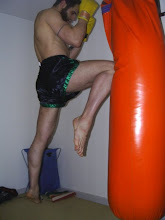 Judo which stands (JU = Gentle) + (DO = Way) was originated from Japan in the 19th century. The reason why it is called the gentle way is because of its feature such as throwing, grappling, locks or executing a choke, not like other martial arts where the focuses on hitting it’s opponent. In Judo it does have Thrusts, Strikes and Weapons and used for Katas but it is not allowed to be used in competition or practices and also Judo uses the opponent's strength, weight and momentum against the opponent itself. As most of the “Non-Judo” practitioner might think that it this art is quite similar to Sambo and Brazilian Jiu Jitsu but in fact, Judo is like the grandfather to these arts as these martial arts are developed due to the spread of Judo to worldwide.
Judo which stands (JU = Gentle) + (DO = Way) was originated from Japan in the 19th century. The reason why it is called the gentle way is because of its feature such as throwing, grappling, locks or executing a choke, not like other martial arts where the focuses on hitting it’s opponent. In Judo it does have Thrusts, Strikes and Weapons and used for Katas but it is not allowed to be used in competition or practices and also Judo uses the opponent's strength, weight and momentum against the opponent itself. As most of the “Non-Judo” practitioner might think that it this art is quite similar to Sambo and Brazilian Jiu Jitsu but in fact, Judo is like the grandfather to these arts as these martial arts are developed due to the spread of Judo to worldwide.The founder Kano Jigoro was a son to a Shinto Priest and government Official, Kano was a student of Jujutsu back in the late 1870s and after mastering the art of Jujutsu Kano start to develop techniques like kata-guruma and uki goshi back in 1880s, and with new ideas on developing the art of self defense Kano went to study his art of evolved jujutsu with a few students in a Buddhist temple which the place is later known as Kodokan. The art at that time was known as Kano Jiu-Do which later changed to Kodokan Jiu-Do and finally known as Judo at this age.
If we were to talk about Judo, besides the founder Kano Jigoro, all of us in Martial Arts Asia gives the highest respect to Keiko Fukada, 9th Dan and it made her the highest ranking women in the Judo World, born in 1913 who is the direct student of Kano Jigoro, the Keiko is still teaching Judo up to date. Yes, there is no typo error here, she should be 96 this year and the coming Judo camp will be on July 24-26, 2009 in San Jose and yet she still still actively teaching Judo.
Judo Primary focus is on nage-waza (throwing) and ne-waza (groundwork), I have listed a simple break down on the list of techniques to help us to understand more on the techniques.
nage-waza (throwing) is divided into 2 categories which is tachi-waza (standing techniques) and sutemi-waza (sacrifice techniques)
1. tachi-waza (standing techniques)
- te-waza (hand techniques)
- koshi-waza (hip techniques)
- ashi-waza (leg techniques)
2. sutemi-waza (sacrifice techniques)
- ma-sutemi-waza (thrower fall backwards)
- yoko-sutemi-waza (thrower fall sideways)
ne-waza (groundwork) is divided into 3 categories
1.kansetsu-waza (attacks against joint locks)
2.shime-waza (strangleholds)
3.osaekomi-waza (pinning techniques)
There are seven official forms of kata that are recognised by the Kodokan:
1. Randori (Free practice)includes of 2 two different kata:
1a. Nage no Kata (Throwing forms)
1b. Katame no Kata (Grappling forms)
2. Kime no Kata (Old style self-defence forms)
3. Kodokan Goshin Jutsu (Modern self-defence forms)
4. Ju no Kata (Forms of "gentleness")
5. Itsutsu no Kata (The five forms)
6. Koshiki no Kata (Ancient forms)
7. Seiryoku Zen'yō Kokumin Taiiku no Kata (National Physical Education kata)
However there are also other katas that is not recognized by Kodokan with other focuses.
Weight Divisions, are to separate both the parties to have a equal advantages over each other, the divisions are as below
Men
Under 60kg
60-66 kg
66-73kg
73-81kg
81-90kg
90-100kg
Over 100kg
Women
Under 48kg
48-52kg
52-57kg
57-63kg
63-70kg
70-78kg
Over 78kg
Judo is firstly seen in the LA Olympics in 1932 where the founder Kano Jigoro and about 200 students gave a demonstration, and Kano passed away before seeing Judo being officially taken in as an Olympic sport in Tokyo Olympics in 1964 for men and in 1988 for women.
For this posting, we would not talk about it’s belt and grading as it varies for different countries, we’ll leave it for another time and we hope you have enjoyed reading so far.
Image taken from: ultimate-judo.com












Thanks for that. great intro there
ReplyDelete